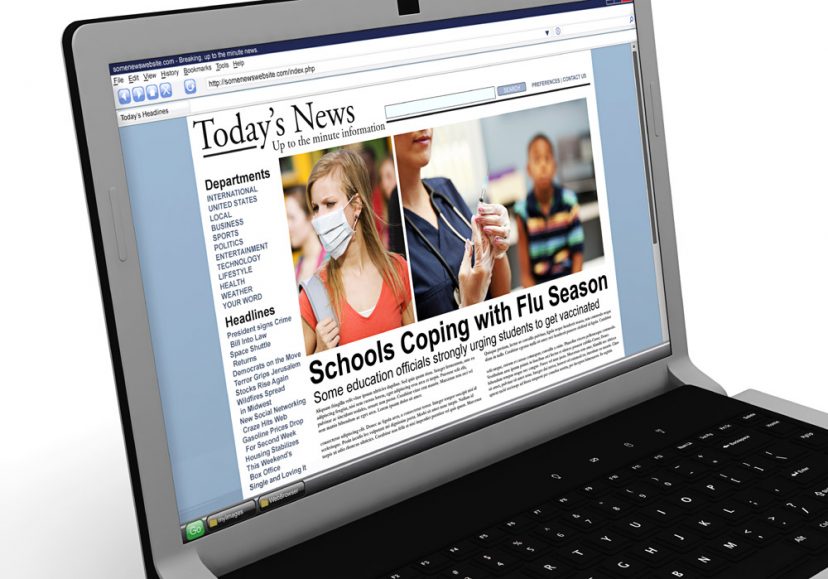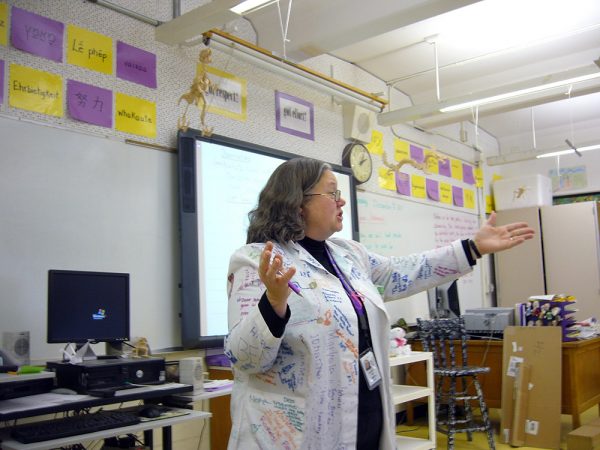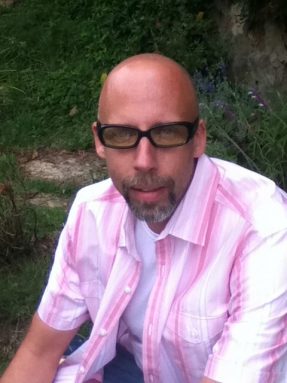Extra! Extra! Read all about science
Teachers and experts share their secrets on using the news to enrich science class

Currents events bring the outside world into the science classroom. They both make teaching more effective and increase the relevance of what students learn.
sjlocke/iStockphoto
When Sharon Reuter gives her sixth-grade science students a news story to read over the weekend, their response often brings a smile to her face.
“Yay! No homework!”
The assignment is, of course, very much homework. It includes plenty for her students to read, new vocabulary words to define and questions to answer, all on a standard form. Reuter’s students must find the who, when, where and what in the science article, whether it’s about Mount St. Helens rumbling back to life or the latest outbreak of food-borne illness. They also must identify the article’s claims, pinpoint any supporting evidence and brainstorm a potential related career.
Reuter knows her students always look forward to the task. That is because a well-planned current events assignment can tap directly into what interests and motivates them most.
“That is one of the keys of being a good teacher: Tricking kids into wanting to learn,” says Reuter, who teaches at Washington Middle School in inner-city Seattle.
Making current events a routine part of science instruction can help reinvigorate student interest in the subject, say teachers and academic experts.
“For me, current events are one way to engage young people in real-world discussions of the applicability of science,” says Robert Simmons, a professor in the education department of Loyola University Maryland and a former middle-school science teacher. “Students have asked me, ‘Why are we learning this?’ If we cannot answer that question, we need to go back to the drawing board and figure it out. The answer cannot be, ‘Because it’s on the test.’”

It’s no mean feat to link a science story in the news to a middle- or high-school science curriculum in an engaging and ultimately effective way, teachers tell Science News for Kids.
“Realistically, when students walk away, they will remember only a small percentage of the content,” says Brendan Casey, who teaches eighth-grade physical science at Joan MacQueen Middle School in Alpine, Calif. “The part they will remember is what relates to them. So you have to relate the content to what they care about — not what you care about.”
Casey’s students create “interactive” notebooks, pasting an article on one page and using the facing page to create a summary that combines text and illustration. They can then formulate questions for each paragraph of the news story, moving from queries that can be answered in the article to those that may be inferred from it. The goal is to eventually have students answering questions by thinking beyond what they have read.
This approach to using current events in the science classroom confers a wide range of benefits. Just reading about scientists experimenting in the lab or working in the field can be an eye-opener for students who have never considered career options beyond, say, professional athlete or recording artist.

Supplementing science class with current events demands time and effort, of course. However, doing so — even in this era of “teaching to the test” — can aid in test preparation, some teachers say, especially given the shrinking volume of students’ nonfiction reading across all subjects. The critical-thinking skills that apply to reading about current events also apply in a test environment, educators add.
Reading news stories is also good preparation for emulating scientists. “After all, scientists spend much more of their time reading and writing than they do doing experiments,” says Brittany Franckowiak. This first-year teacher at Wilde Lake High School in Columbia, Md., introduces as much primary data — including the very latest NASA climate change findings — into her classroom as possible.
Their go-to media
So what materials do teachers rely on most when using current events to augment their science instruction? Generally, they seek news stories that are timely, highly readable and tied, even if tenuously, to the curriculum. Articles that feature scientists at work, come in easy-to-print formats, include actual data and provide a glossary and questions all remain teacher favorites.
Their go-to sources, beyond Science News for Kids, include Scholastic Science World, National Geographic Extreme Explorer and, for older students, Science News, New Scientist and Discover.
In general, teachers say, the more yuck, the more luck they have in engaging students.
“I gave my students a story about bedbugs and about 100 percent of the kids handed in the assignment, which wasn’t normal,” says Esther Innis, a seventh-grade science teacher at Bloomfield Middle School in New Jersey. The gross-out factor seemed to really hook them and keep them, she says.
Others are going beyond media coverage and dipping into original research — assigning passages from, say, Charles Darwin’s On the Origin of Species or even peer-reviewed studies edited for classroom use. The National Center for Case Study Teaching in Science at the University at Buffalo in New York is one such source. Another is a project led by Bill Klemm, a Texas A&M University neuroscientist who provides adapted peer-reviewed papers and allied lesson plans for teachers to download. Both resources provide content to teachers for free.
“The idea is to take a topic kids care about, like test anxiety or concussions in sports, and find a research paper on that topic and rewrite the paper so they can understand it,” Klemm says.
He’s tested the adapted papers on middle school and high school students and even undergraduates. If tailored correctly, he says, the material will allow even young kids to understand the data — and sometimes appropriately challenge whether the authors of the original paper interpreted their findings correctly.
Hunting for something germane
Incorporating current events in the classroom is rarely as easy as running off a few dozen copies of whatever science story appeared last week in print or online. Teachers lament just how difficult it can be to find articles that are appropriate not only for whom they teach, but also for how, when, why and where.
“It’s definitely an area where teachers must try to find their own supplemental material,” says Mary Ellen Wolfinger, a sixth-grade science teacher at Takoma Park Middle School in Silver Spring, Md.
For teachers like Catherine White, the list of what isn’t appropriate for her high school chemistry students can rival the list of what is.
“If it’s strictly a feature article and gives information but doesn’t talk about specific research, I don’t use it. If it just doesn’t support anything in my curriculum, I don’t use it,” says White, who teaches science primarily to students for whom English is a second language at East High School in Kansas City, Mo.
So what does work? White, for one, looks for news stories that neither dumb down the science nor dress it up with cute language.
“That’s what I like about Science New for Kids. Kids need plain, good writing about things that are important in science,” White says. “We are selling kids short if you have to make it so sexy that you skip over the content.”
When teachers do find an article that fits the bill, they stash it away — Wolfinger recently did so with a local news story about butterflies and global warming. The really good stories sometimes get trotted out, year after year.
“Every fall I do a unit on hurricanes. Science News for Kids had an article on hurricanes in 2004 I have been using ever since,” says Innis, the seventh-grade science teacher. Old Science News for Kids feature stories on French fries and ice cream are other perennial favorites, she adds.
When teachers search for engaging content, they sometimes fail to turn up the perfectly suited article. Reuter, for example, says she is still looking for a news story that she can peg to the laboratory safety unit she teaches each fall.
Making kids work
One academic expert favors allowing students to do the legwork in finding current events that interest them. It’s then up to the teacher to help link what students turn up to the subject at hand.
“The goal should be to take not what adults think of as interesting stories, but what kids are bumping into on the Internet or TV and then use it as a launching pad for what you want to cover in the classroom,” says Duke University biologist Stephen Nowicki (who is also author of a high school introductory biology textbook).
Teachers, however, report mixed success in getting students to track down appropriate news stories on their own.
“With my ninth-grade introduction to ecosystem students, a couple of times I had them look for articles on how a particular organism is responding to climate change,” Franckowiak says. “If I were to search it, I could find lots of stuff quickly, including an article that would be pretty good. What I didn’t realize was they don’t have a lot of practice doing very targeted searches. They would go to Google and type in ‘organism.’”
Franckowiak likes to use the jigsaw, a common teaching technique. For a unit on epidemiology, she focused on a hot topic then in the news: antibiotic-resistant bacteria. She first divided her class into four groups, assigning each two to three articles, press releases and speeches culled from various sources that reflect differing viewpoints. The first day, each group read its selections and answered basic questions. The second day, she mixed it up, creating new, smaller groups made up of one representative from each of the previous groups. She then assigned more synthesis-level questions, such as, “Why is the spread of antibiotic-resistant bacteria so hard to slow?” She also tasked each group with developing a final joint presentation or poster.
Simmons, when he taught science in the Detroit public school system, used a more gradual introduction to current events. First, he would reach into the lives of students and have them share their experiences. Only afterward would he go on to help them relate their knowledge to a news story.
With a topic like asthma, for instance, his students would begin by discussing the trash incinerator just north of downtown Detroit. Then Simmons would introduce news stories about air pollution and respiratory health, leveraging what his students already knew.
Keep in mind, Simmons says, “It’s not useful to put things out there that are very abstract.”
The use of current events in the science classroom, no matter the technique, ultimately reinforces the relevance of the subject matter, teachers say. Crucially, it allows students to connect both their education and themselves to the world outside the classroom.